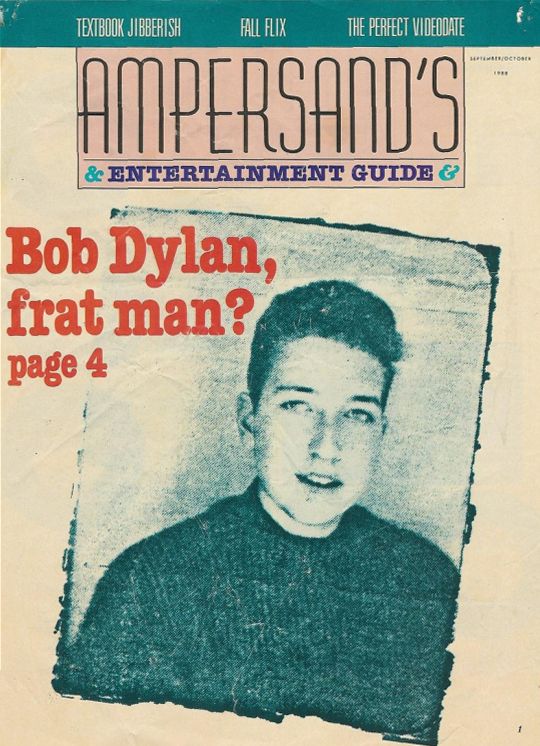Ampersand's Entertainment Guide
Ampersand's Entertainment Guide was a magazine particularly aimed at college students. It offered articles predominantly focused on music, arts, and entertainment. From the years 1977 to 1989, the magazine was distributed free of charge as a supplement to various campus newspapers.
The conception of Ampersand's Entertainment Guide can be traced back to 1977. The magazine was originally known as Ampersand, founded by Jeffrey Alan Dickey and Durand Weston "Randy" Achee. The founders operated the publication through their privately held company, Alan Weston Communications, based in Burbank, California. The company name was derived from the middle names of its founders. The initial funding of the magazine, around $100,000, came partly from the famed radio personality Wolfman Jack, Achee's uncle. The publication model was inspired by Parade, a magazine inserted into Sunday editions of major metropolitan newspapers. The income was drawn mainly from advertisements, and record labels showed early interest by signing on as advertisers, hoping to sell albums to the college students. By 1978, Ampersand was available at 50 colleges and expanded to 170 colleges by 1987.
The magazine was originally styled as "& Ampersand", with the typographic figure ampersand symbolizing "in addition to". This was in line with the magazine's distribution model. The magazine was published nine times during the school year, once a month from September to June. In 1987, Ampersand underwent a style change and was rebranded as Ampersand's Entertainment Guide, shifting to a quarterly publication schedule.
By 1988, the market for college magazines was described as "glutted", with several major competitors closing down. Despite this, Alan Weston Communications sought to gain market share by launching additional campus magazines. In 1981, they attempted Beyond, a science and technology-oriented college magazine. They also tried a photography magazine called Break and then Freeze Frame, but these ventures were short-lived. In September 1985, they launched College Woman, which managed to reach half a million students. They followed up with Moving Up in early 1986, aimed at college men, and College Musician in September 1986, targeting music educators. By 1987, Ampersand's Entertainment Guide was reported to have a readership of 1.2 million students, the same as Newsweek's On Campus.
The editor of Ampersand's Entertainment Guide was Judith Sims, a music journalist who had previously served as the editor of TeenSet magazine in the 1960s, contributed to Melody Maker in the 1970s, and was the Los Angeles Bureau chief for Rolling Stone. Other contributors to Ampersand's Entertainment Guide included food writer Colman Andrews, music/film critic Jacoba Atlas, and music scholar Ed Cray, who joined in 1978. In 1988, Alan Weston Publishing faced difficulties with advertisers, leading to the termination of all their campus magazines, including Ampersand's Entertainment Guide, in early 1989.{{Categories}}